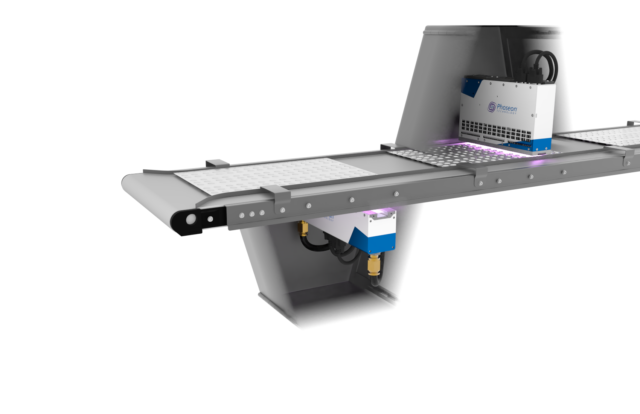Harnessing the Prospective of UV Sanitation: Shielding Health and Hygiene
As the world grapples with the ongoing pandemic and the continuous risk of contagious diseases, the value of preserving health and wellness and hygiene has actually never been extra evident. In this context, using the capacity of UV disinfection arises as an encouraging option. UV sanitation, a technology widely utilized in various markets, has actually confirmed reliable in getting rid of dangerous microorganisms. Nonetheless, there is far more to explore behind the science of UV sanitation and its applications. From comprehending the systems at play to applying this modern technology in our lives, this discussion aims to clarify the potential of UV sanitation and its function in safeguarding our health and health.
Understanding UV Disinfection
UV sanitation is a highly effective and commonly used method for removing harmful microorganisms and making sure health and wellness and hygiene. This strategy uses ultraviolet (UV) light to inactivate microbes by damaging their DNA and avoiding them from duplicating. UV disinfection is especially effective against bacteria, viruses, and other bacteria that can trigger infections and illness.
The principle behind UV sanitation is easy yet effective. UV sanitation can be applied in different setups, consisting of water treatment plants, health care centers, food handling sectors, and air filtration systems.
Among the advantages of UV disinfection is its capacity to properly and effectively remove a large range of pathogens without the need for ingredients or chemicals. Unlike various other sanitation techniques, such as chlorine or ozone, UV disinfection does not present harmful by-products or chemical deposits into the atmosphere. Furthermore, UV disinfection is a non-contact procedure, which means that it does not call for physical call with the microorganisms, lessening the threat of cross-contamination.
The Science Behind UV Sanitation
The performance of UV disinfection hinges on its capability to interfere with the genetic material of bacteria, making them unable to replicate and therefore eliminating their damaging possibility. UV, or ultraviolet, radiation is a type of electromagnetic radiation with wavelengths shorter than noticeable light. It is categorized right into three kinds: UV-C, uv-a, and uv-b. UV-C radiation, especially, has the quickest wavelength and the highest possible power. This high-energy UV-C radiation is most effective in sanitation applications since it can penetrate the cell walls of microbes and damage their DNA or RNA.
When bacteria are subjected to UV-C radiation, the energy is taken in by their hereditary material, triggering bonds to break and creating chemical reactions that disrupt their ability to recreate. This protects against the microorganisms from reproducing and spreading infection. UV sanitation is particularly reliable against germs, fungis, and viruses, consisting of typical virus such as Escherichia coli, Salmonella, and Influenza.
The scientific research behind UV sanitation is sustained by comprehensive study and researches. It has actually been revealed that direct exposure to a sufficient dosage of UV-C radiation can achieve a high level of sanitation, typically exceeding 99.9% efficacy in eliminating microorganisms. It is vital to note that the performance of UV disinfection depends on various variables, including the intensity of UV-C radiation, exposure time, distance from the UV source, and the sensitivity of the bacterium to UV radiation (uv surface disinfection).
Applications of UV Disinfection
Offered the substantial research study and efficiency of UV sanitation in interfering with the genetic material of microorganisms, it is essential to check out the various useful applications of this innovation. UV sanitation has shown to be a valuable device in a variety of sectors where maintaining a secure and clean setting is crucial.
One major application of UV sanitation is in healthcare settings. UV light can be made use of to disinfect surface areas, devices, and also the air in health centers and medical facilities. This helps to minimize the risk of healthcare-associated infections and makes sure a safer atmosphere for people and medical care employees.
Another important application remains in the food and drink sector. UV sanitation is website link made use of to treat water and remove harmful microorganisms, such as E. coli and Salmonella, from the production procedure. uv surface disinfection. This guarantees the security and top quality of the products we consume
UV sanitation is likewise commonly used in water treatment plants and wastewater treatment facilities. It is an efficient method for damaging hazardous germs, viruses, and bloodsuckers that can be present in water sources. This aids to supply clean and safe drinking water to areas and protect the environment from air pollution.
In addition, UV disinfection is used in the pharmaceutical industry to sterilize tools and keep the integrity of products. It is additionally utilized in labs and study facilities to prevent contamination and ensure exact outcomes.
Benefits of UV Disinfection Modern Technology
One significant benefit of employing UV sanitation innovation is its ability to efficiently eradicate microorganisms without using rough chemicals. This is especially beneficial in various setups, such as health care centers, water therapy plants, and food processing industries, where the existence of unsafe pathogens presents a substantial danger to public wellness and safety and security.
Unlike standard sanitation techniques that depend on chemicals like chlorine or ozone, UV sanitation modern technology makes use of ultraviolet light to target and damage the DNA of bacteria, effectively counteracting their capability to recreate and create infections. This procedure not just eliminates the demand for potentially damaging chemicals yet also decreases the danger of chemical deposit or results remaining in the cured setting.

Furthermore, UV sanitation technology is ecologically pleasant. As it does not rely on making use of chemicals, it gets rid of the need for their transportation, manufacturing, and disposal, decreasing the general carbon footprint connected with disinfection procedures. In addition, UV sanitation systems have a longer life expectancy compared to chemical-based techniques, leading to much less constant replacement and further decreasing waste.
Carrying Out UV Disinfection in Day-to-day Live
To successfully implement UV sanitation in life, people and organizations can include mobile UV disinfecting tools into their hygiene routines and cleaning practices. These tools are made to produce ultraviolet light, which has been confirmed to eliminate or suspend a wide variety of microorganisms, consisting of fungis, germs, and viruses. By utilizing portable UV disinfecting gadgets, people can sanitize commonly touched things and surface areas, such as cellular phone, secrets, doorknobs, and laptops, minimizing the danger of spreading out bacteria and infections.
Along with integrating mobile UV disinfecting tools, it is important to follow proper guidelines and recommendations for efficient UV sanitation. This includes making sure that the device is made use of properly and for the suggested period to attain optimum disinfection results. It is also critical to focus on safety and security steps, such as putting on protective eyewear and avoiding direct exposure of the UV light to the skin.

Moreover, companies can carry out UV disinfection technology in different setups to enhance health methods. Health centers and medical care facilities can make use of UV disinfection robotics to he has a good point disinfect patient spaces, operating movie theaters, and various other high-touch locations. Food handling sectors can integrate UV sanitation systems right into their production lines to improve food safety and protect against contamination.
Conclusion
In final thought, UV sanitation modern technology holds great possible in protecting health and wellness and health. With its many advantages, UV disinfection is a useful device for keeping a clean and healthy and balanced environment.
Unlike various other sanitation methods, such as chlorine or ozone, UV sanitation does not present damaging spin-offs or chemical deposits into the setting. It is essential to note that the performance of UV sanitation depends on numerous variables, consisting of the strength of UV-C radiation, exposure time, distance from the UV source, and the vulnerability of the bacterium to UV radiation.
An additional benefit of UV disinfection technology is its capability to supply continuous and rapid sanitation. Unlike manual cleaning approaches, which can be lengthy and need substantial labor, UV disinfection systems can be automated and run continuously, making certain consistent sanitation without human intervention.To effectively execute UV disinfection in everyday life, organizations and people can include portable UV sterilizing devices right into their health routines and cleaning up practices.